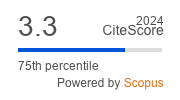Article | Open Access
Japanese Social Exclusion and Inclusion from a Housing Perspective
| Views: | 5117 | | | Downloads: | 3068 |
Abstract: This paper examines conditions of social exclusion and attempts at social inclusion in Japan from a housing perspective. Companies, households and the government have previously supported housing in Japan. However, corporate welfare was withdrawn following the globalization of the economy from the 1990s onwards, support from families and communities declined due to a reduction in household size, and governmental housing support has shifted away from direct support. A reduction in income and unstable work left many people with unstable housing. Certain workers, such as foreigners performing dispatched labour, could not maintain continuous work under the influence of the Lehman Brothers’ bankruptcy in 2008. Household size has shrunk according to changes in the industrial structure, and the number of households that cannot sustain housing is increasing. Such vulnerable households—elderly people, the handicapped, low-income earners and single parents—can become excluded from the rental housing market. On the other hand, governmental measures are promoting local dwellings and maintaining the condition for a dwelling service. Activities, such as local community support of the homeless have been initiated by various Non-profit Organisations (NPOs) and NPO activities are increasingly exemplifying measures to achieve social inclusion.
Keywords: corporate welfare; economic poverty; housing perspective; informal mutual aid; Non-profit Organisations
Published:
© Yoshihiro Okamoto. This is an open access article distributed under the terms of the Creative Commons Attribution 4.0 license (http://creativecommons.org/licenses/by/4.0), which permits any use, distribution, and reproduction of the work without further permission provided the original author(s) and source are credited.


